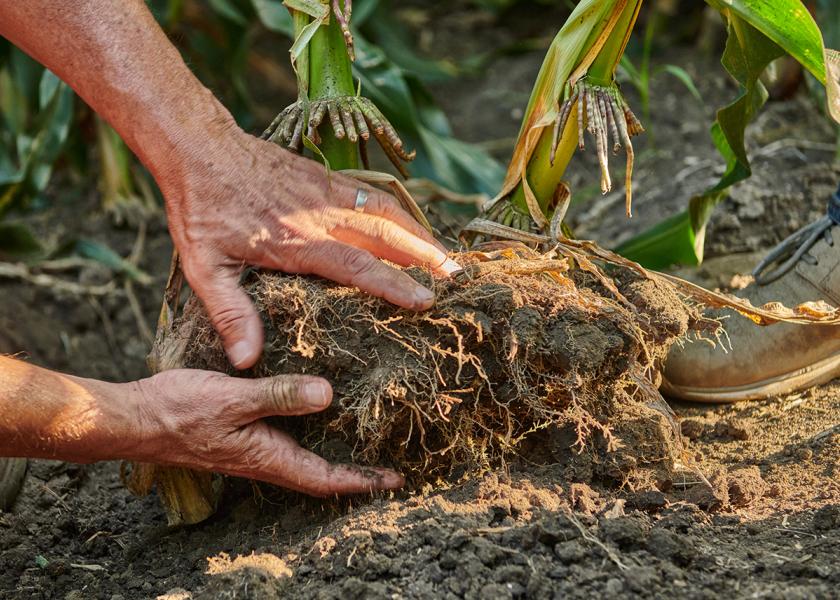Soil Carbon Enhancing Seed Flowability Agent Enters U.S. Market

Via a network of independent dealers, Loam Bio is bringing a new carbon market opportunity to farmers. It’s a two-in-one offer: replace your standard seed flowability agent with Loam Bio’s CarbonBuilder and automatically be enrolled in its carbon program, SecondCrop.
In 2024, the company, which started in Australia in crops such as barley and canola, is offering its product for use on soybean acres in six states: MN, SD, ND, WI, NE and IA.
Loam Bio says this is a first of its kind product as it requires no practice change from a farmer—they apply a flowability agent similar to standard practice—which in turn offers carbon market opportunities.
“One of our founders is an agronomist who is passionate about soil health,” says Jim Presnail, vice president of product development. “They discovered organisms that were able to capture carbon in the soil and hold it there for a long time.”
Presnail explains the Loam Bio microbes are symbiotic with plant growth—and while there are no yield gain claims, company research doesn’t show yield drag either. The Loam Bio microbes aim to optimize for carbon capture while maintaining a symbiotic relationship with the plant.
“The microbes set up an exchange where they receive the simple sugars plants produce via photosynthesis, which is passed to the fungus that grows in the soil and then exchanges micronutrients to the plant,” Presnail says.
He adds the soil health benefits to increasing carbon in the soil include increased water holding capacity.
CarbonBuilder is used in replacement of a talc or graphite product. Application rate is 3 oz/acre. The company says its pricing is no more than $18/acre with opportunity to take advantage of first year incentives to reduce the up-front cost.. Product application automatically puts farmers in the SecondCrop carbon market program. The product price includes the follow up measurements and soil testing for carbon, which the company says they have a track record of selling their carbon credits for 30 to 40% more than standard prices of $20 to $30/ton. Some industry analysts say an average expectation can be to have ½ ton of carbon sequestered per acre.
“A differentiator for us is we measure carbon through quantitative measurements to decide how much total organic carbon is in the soil,” Presnail says. “In addition to that, we know the kind of carbon we are capturing based on the activity of the fungi which are binding carbon to the mineral component of the soil where it persists.”
The company says there could be a 3 to 4% carbon build every year, but how that translates into the carbon market opportunity is location dependent.
“We are formulating a product so it can be used every year. The microbes persist in the soil for the season, but an inoculation is required,” he says.
This year is the launch year for the soybean product, with company leaders saying they are working on a corn product for 2025. The soybean product has been in field trials in the U.S. for the past four years. Loam Bio leaders say they have done compatibility testing with seed treatments, and they’ve found good compatibility with a majority of the fungicide and rhizobia products.
“This is really providing the intersection of providing farmers with an additional source of income and a tool for further improvement of soil health,” Presnail says. “Farmers can get paid for putting something into their soil rather than the crop they are extracting. This means they can be part of a whole new dynamic.”







